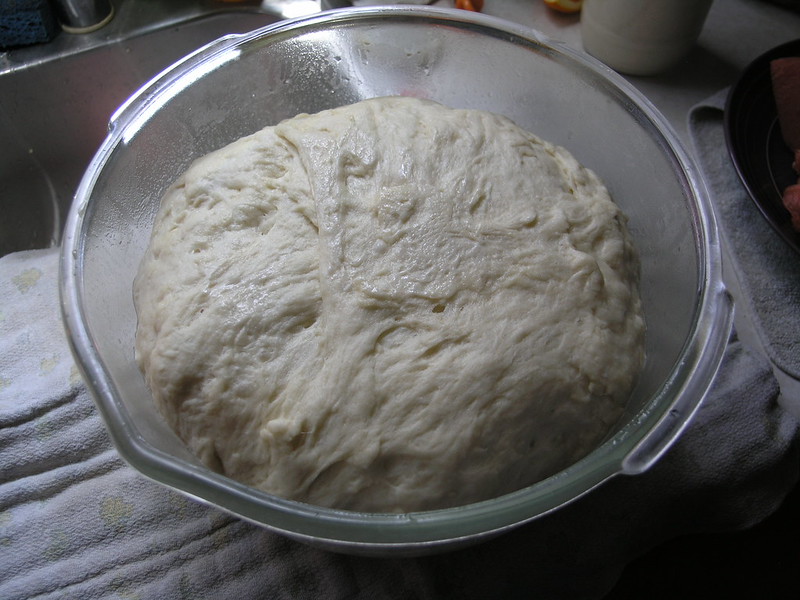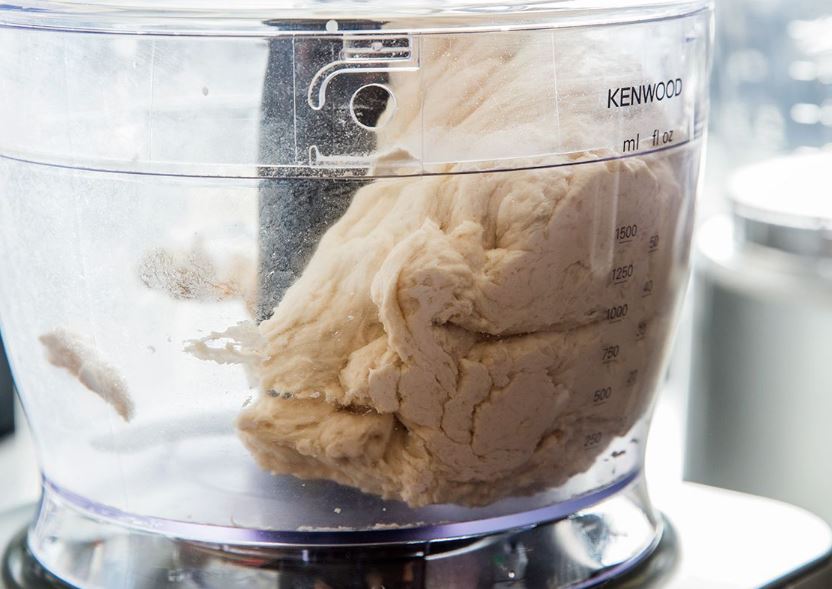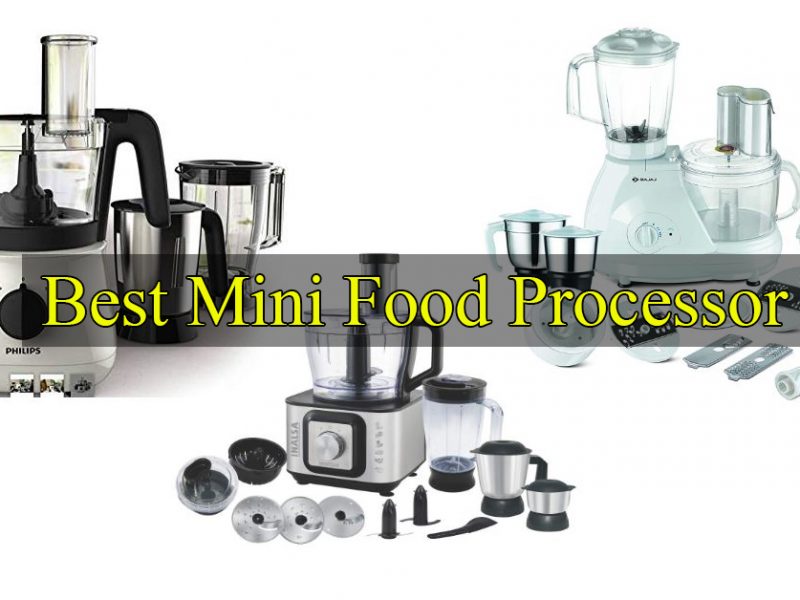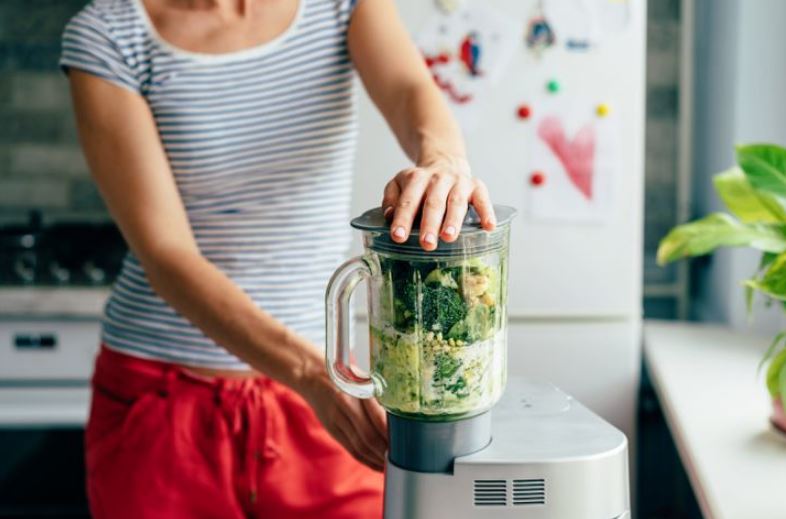Food Processor has a number of uses that can only be fulfilled by several other gadgets in one. This makes it an ideal choice for any customer who is looking for cooking their own meals. Customer engagement with these types of products is extremely high in the market which gives them a lot of value. In this article, we are going to cover How to make the dough for Roti or Chapati in Food Processor.
How to make the dough in Food Processor
Several important food products can be made through the use of the Food Processor from the very scratch. One of the most used food products in such a category is dough. Considering how the dough is an extremely diverse food product that is used in various recipes it alone can testify to how useful the food processors are for the most part.

Kneading: The kneading of the dough is made easy through the use of the Food Processor since it allows automated function and does not require any manual operation other than putting the ingredients into the feed tube. The disc helps in the rotation of the dough and uses kinetic energy to knead it in accordance with the needs of the user. There are a certain number of steps which are involved in the making of the dough through the use of a Food Processor.
These steps are as follows :
Adding required ingredients – The required amount of ingredients are to be added to the bowl to ensure maximum efficiency for the processing of the dough from scratch. Doing so ensures a proper understanding of the entire dough-making process.
Preparing the Yeast – After enough ingredients are added the preparation of yeast becomes extremely important. To do that the user needs to prepare it in a separate cup for the most part as well. It is necessary to understand how the company needs to ensure the engagement of the dough ingredients.
Adding the wet ingredients – A major factor to be observed during the preparation of dough through the food processor will be the wetting of the dough ingredients. Doing it in accordance with the amount is the most critical step for dough preparation.
Pulsing-A proper pulsing of the ingredients is to be observed before the preparation process is initiated. This is because it allows for proper aeration of the Dough and maintains its quality throughout the cooking process.
Turning up the speed– The food processor is to be sped up to maximize the rate of dough ball formation which might take around 20-25 seconds when pulsed properly. The speed will also often influence the rate of Dough ball formation in the food processor.
Turning the Dough – Turning the dough upon being sprinkled with some flour is also a necessary step in the dough formation process. It ensures the engagement of the dough into a more fixated texture and volume.
Re-Pulsing (continue pulsing) – The dough is to be pulsed again for about 25 seconds while keeping the lid on to ensure a humid surrounding for it. This process ensures proper volume for the dough as well and will oversee the proper development of the dough in all.
Removal of dough– The pulsed dough is then to be removed from the food processor and therefore can be concluded to be the last involvement of the food processor in the dough-making process.
Rising of the dough – Upon the collection of the dough from the food processor it is to be left in an airy environment to let it rise on its own. This will ensure the volume control of the dough and the process takes about 45 minutes
See also: How to Shred Vegetables in Food Processor?
How much time is required in kneading the dough with a Food processor
The dough mostly gets mostly ready within 30 seconds to 1 minute. The texture of the dough is quite often used to judge whether it’s ready or not. A well-made dough forms round balls which are pulled away from the side of the work bowl. The dough often shows a shiny and elastic appearance when carefully viewed.
Blade required for making the dough
Most Food processors come equipped with a cylinder in which the food is to be kept for processing and they are also equipped with a sharp S-shaped blade which is termed as Sabatier blade. The overall performance of a Food Processor depends largely on how the Sabatier blade works. Since the blade does the slicing and shredding the other functions of the food processor become easier to access.
In order for the Processor to work, it is turned on and the food is pushed down the feed tube until it comes into contact with the disc which can process it and thereby pass it into a bowl upon completion. Among these, the plastic dough-making blade and metal multi-purpose blade are most commonly used in kneading and dough-making purposes.
Various other ways come in handy while making Dough and other ingredients in a Food Processor
Based on the function of a food processor, is the most important factor for it to cover since it decides its overall usability in the kitchen. As mentioned previously the Food Processor in itself can perform a great number of kitchen functions, especially kneading a dough within a short period of time with incredible accuracy which is required to be understood by the users to make full use of it.
The common processors in dough making are as follows :
Blending – The process of blending is one of the most stable functions that a Food Processor can perform with ease. It mostly uses the Sabatier blade to ensure a smooth blending of any ingredients provided which helps in improving the overall usability of the implement to an even higher degree. The overall performance of a kitchen device depends a lot on the basic uses it has.
Whisking – It might be surprising but actually, the Food Processor is often used for whisking various ingredients of the dough making and it is surprisingly good at it as well. The use of Food Processors has increased even further since it started involving the whisking function in its already impressive portfolio which is a positive turnabout.
Grating – As already pretty clear from the above descriptions the Food processor is also largely used for grating various ingredients in the kitchen as well.

Advantages of using Food Processor in Roti Or Chapati Dough Making
The use of various functions of the Food Processor has made it an extremely important kitchen appliance for the most part. The overall performance of a food processor depends on how well it can show its advantages to the customers. Some of the common advantages of using a Food Processor are :
- It can be used for multiple functions and can serve the function of other separate devices.
- It can help in boosting the rate of ingredient preparation by serving various functions for the most part.
- The overall performance of a kitchen can improve rapidly through the use of Food Processors.
See also: Bajaj Food Factory FX11 600 Watts Food Processor (Review)
FAQ:
What is a Food Processor?
A food processor is a very common yet useful appliance used for the same purpose as its name suggests. The Food processor can actually process a wide variety of food products that are otherwise hard to make from scratch, especially in a home kitchen. However, with time the popularity of food processors has increased quite a lot and it has become increasingly popular even in home kitchens.
This makes it necessary for the users to bear a proper understanding of how the Food Processor works and what it can be used for. As of now the use of Food Processors is becoming more and more diverse due to the introduction of new and better processable food products. A food processor can be termed as the epitome of any kitchen appliance since it can perform many tasks at the same time. It somehow can perform the task of a contemporary blender, chopping board, grinder, and sometimes even a whisker. This diversity has allowed Food Processors to grow into very useful kitchen appliances in the contemporary business market.
Working Principles of a Food Processor
A food processor as mentioned previously can perform a variety of functions. In fact, in a kitchen, it can actually replace a lot of different appliances which can be extremely handy for the users of the kitchen. However, it is still extremely important to understand how the food processor is put to work by the users. There are several factors in work to make sure the food processor can do its task properly. The most important part has to be its design.
See also: How To Make Peanut Butter in A Food Processor?
Conclusion
Finally, it can be safe to conclude that the Food Processor is one of if not the most versatile kitchen tools that can make the cooking process much easier for users. This above-mentioned discussion covers what are the common uses and advantages of the Food Processor in rather detail along with a subtle description of the problems it might pose when used. The evaluation of these problems might be helpful for any customer who is contemplating getting a Food Processor for their own household use.
Stay tuned with Food Processor Hut for more details guides.



